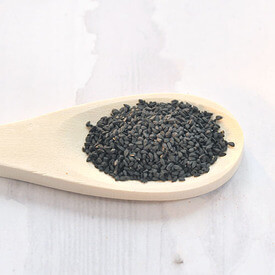
Many of the herbs and spices we use today come from exotic places, such as India, South East Asia, Mexico, and the Caribbean. The spice trade brought rare spices back to Europe and created huge fortunes for many of the top trading companies of the day. Indeed, the spice trade can be traced back over 5000 years and was instrumental in establishing commerce and trade around the world.
Herbs and spices have been a desired commodity for millennia with their culinary and medicinal uses. As such, salt and pepper were once used as currency. Today, those herbs and spices that were practically unattainable by the public are widely available. Due to advances in modern cultivation, commerce, and shipping, these once rare and expensive spices can be purchased at specialty stores or online easily and relatively cheaply. Still, many people are not aware of the variety of spices that exists beyond their supermarket.
So, here are a few of the spices I love to use that you may or may not have heard of. I have added clickable links to our various spices, just in case we have piqued your curiosity.
Saffron – Saffron is easily the most expensive spice in the world. It comes from the stigma of the blue flowering crocus. The stigma must be gently handpicked, and it takes about 400 stigmas to make 1 gram of saffron which explains why it is so expensive. Fortunately, only a small amount is necessary to impart its beautiful orange blush to color and flavor to food. Saffron is most recognizable in dishes such as the Paella.
Sumac – comes from the dried berries of the plant Rhus coriaria. There are many varieties of Sumac and some are poisonous, so care must be taken to avoid those varieties. However, when you buy from a reputable merchant you will not have to worry about what you are getting. The berry or the powder is used as a souring agent. It releases a sour citrus flavor and complements fish and red meat nicely. It is widely extensively in North African, Middle Eastern, and Mediterranean cooking.

Juniper berries – are thought to be the only spice that comes from a conifer and from a cold climate. They grow on small juniper shrubs that are common throughout the Northern hemisphere. These berries are used as the prime ingredient in the ubiquitous gin. The seeds can take up to three years to mature and are picked when they turn a deep blue. They have an aromatic flavor with a sweet accent and are popular in many European cuisines with an emphasis on lamb and venison dishes.
Nigella seed – Also known as black fennel flower, black cumin, and its more common name in the Middle East; kalonji. It has a pungent, slightly bitter flavor with a hint of sweetness. It is a small, black, sharply pointed seed that is commonly used in Bengali, and Turkish cooking. It is commonly used on top of Turkish bread, giving the beard its distinctive flavor and aromatic flavor.
The above spices are some of my absolute favorites. I will add an article each month that details more exotic and rare spices, so, if you are looking for something a little out of the ordinary – just follow the Spice of Life at Gourmet Goldmine.

